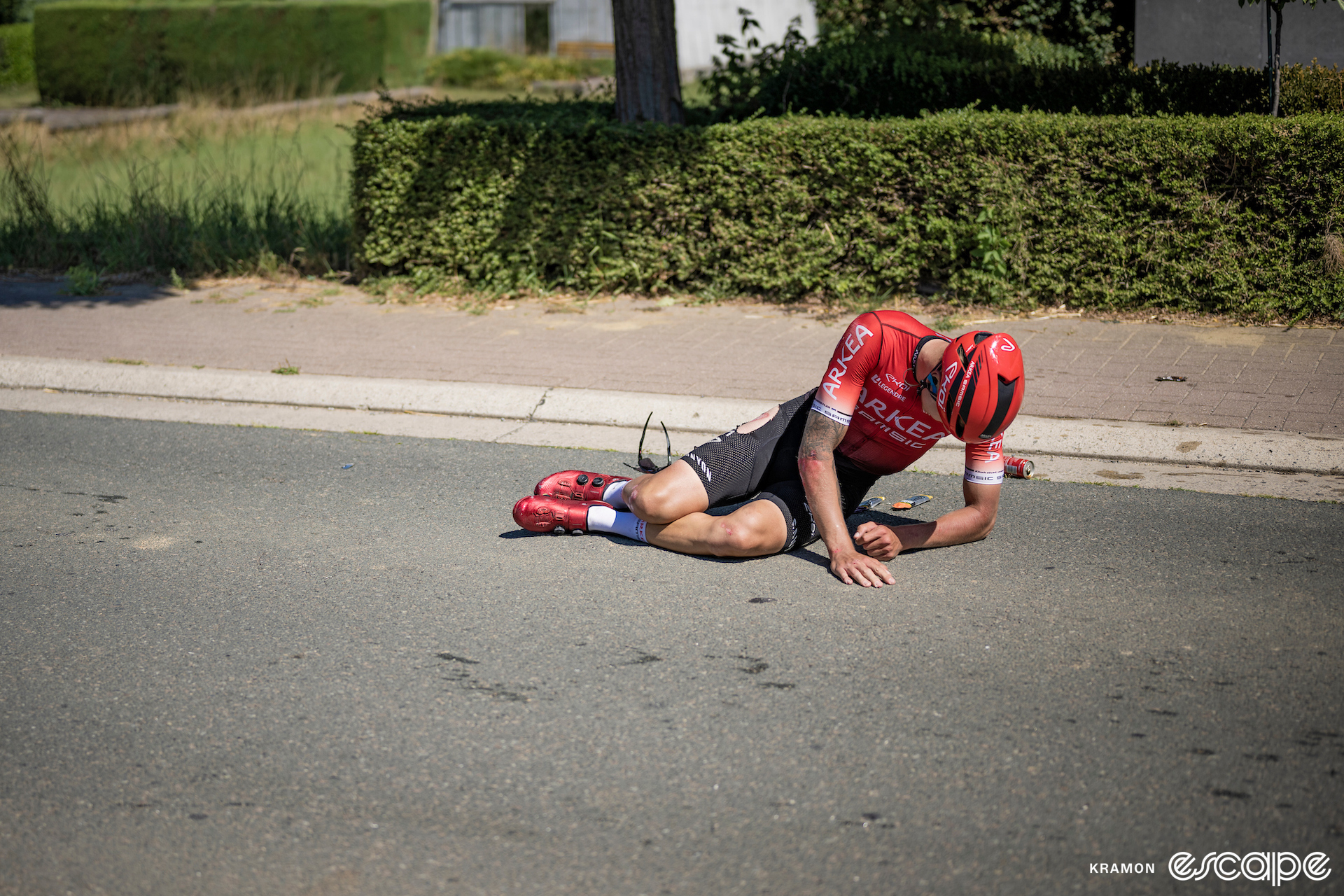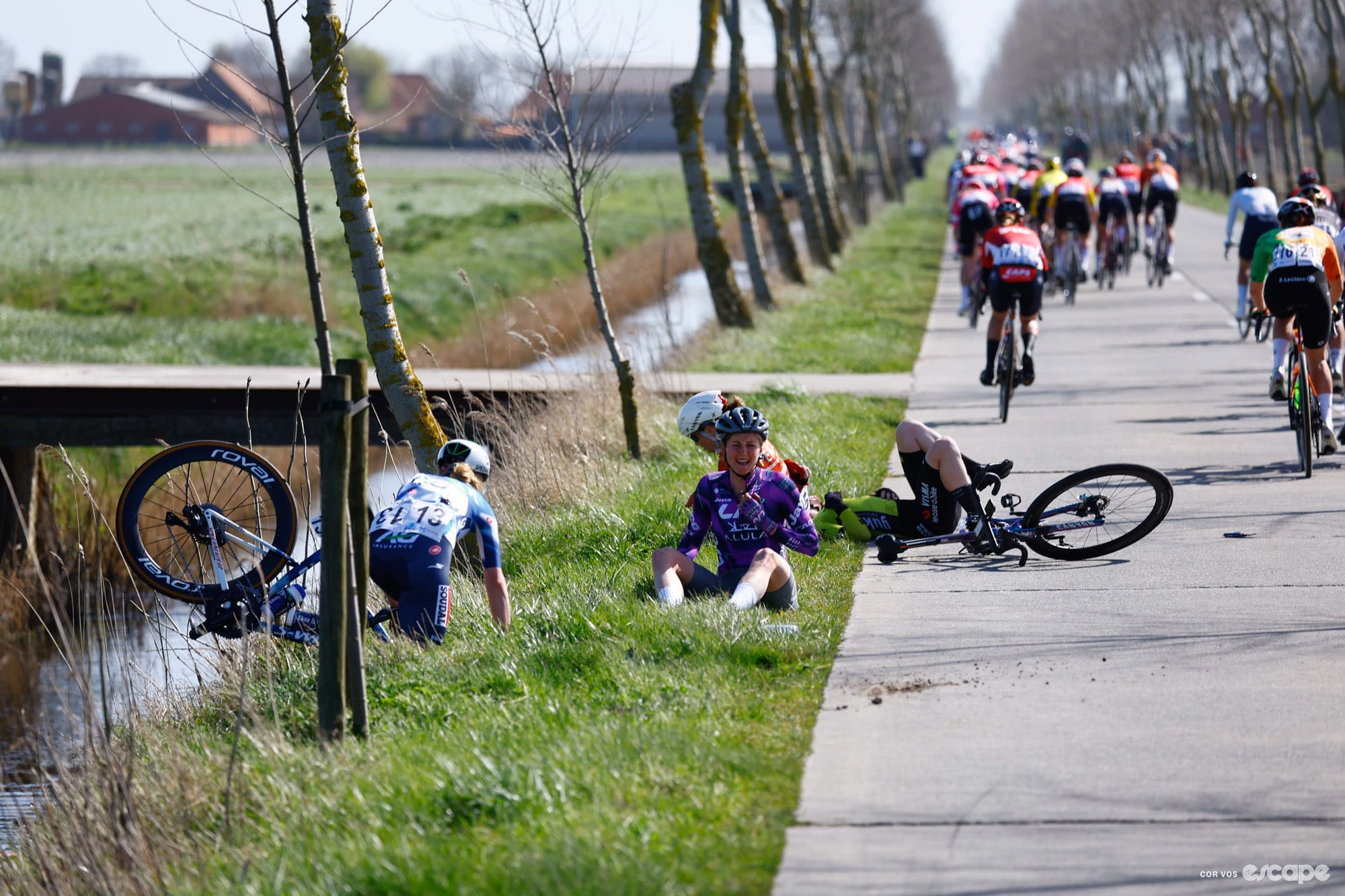Are you a road cyclist who dusts off their mountain bike every so often to hit the local trails? Are you mainly a trail junkie who occasionally rides on the road? Either way, if you’ve dabbled in both disciplines long enough, you’ve probably crashed in both. And if that’s true, you probably have a visceral understanding of the difference between coming off on tarmac (possibly with the involvement of a car or other vehicle), and crashing on your local single-track.
But which is more dangerous, riding on the road or riding MTB? Which is more likely to lead to a serious injury? A handful of researchers at a hospital in Barcelona, Spain have tried to answer those very questions.
The research
In a new pre-print research paper that’s yet to be peer reviewed, Luís Martinez-Sañudo and five colleagues began by saying that there’s a current scarcity of evidence about the volume and severity of injuries related to different cycling disciplines. Which prompted them to start collecting data.
Over the course of a year – from November 2020 to October 2021 – any patient over 18 years old who came into the Hospital Universitari Parc Taulí Sabadell, just north of Barcelona, with a cycling-related injury was asked if they’d like to take part in a study. In all, 149 cyclists opted in – 131 males and 18 females – with the researchers collecting a bunch of info from all of them.
All the basics were there:
- age
- gender
- the type of riding (MTB or road)
- whether they were wearing a helmet
- whether they’d consumed alcohol before their incident
- what the weather conditions were like, and
- how the incident happened.
And then they considered the injuries suffered. They looked at:
- how urgently the rider needed attention (categorised by a triage level of 1-5, where 1 required urgent attention, and 5 was far less serious)
- how severe the rider’s injuries ended up being
- whether surgery was required
- how long the rider spent in hospital.
To assess injury severity, the researchers used the so-called Injury Severity Score (ISS), a widely used metric that ranges between 0 (healthy) and 75 (fatal injury). Each rider’s ISS was calculated by scoring the intensity of injuries sustained to different regions of the body – e.g. head, face, neck, chest, abdomen, spine, and the extremities – and then combining the scores of the three most severely injured body parts.*
From there they were able to crunch the numbers, to see what they could learn from their cohort of 149 riders.
(* Each body section is assigned a score between 0 (no lesion) and 6 (unsurvivable injury), based on an internationally recognised scoring system called the Abbreviated Injury Scale (AIS). The three highest AIS scores are each squared then added together to get the ISS. A score of 6 (unsurvivable) in any category automatically leads to an ISS of 75 (fatal injury).
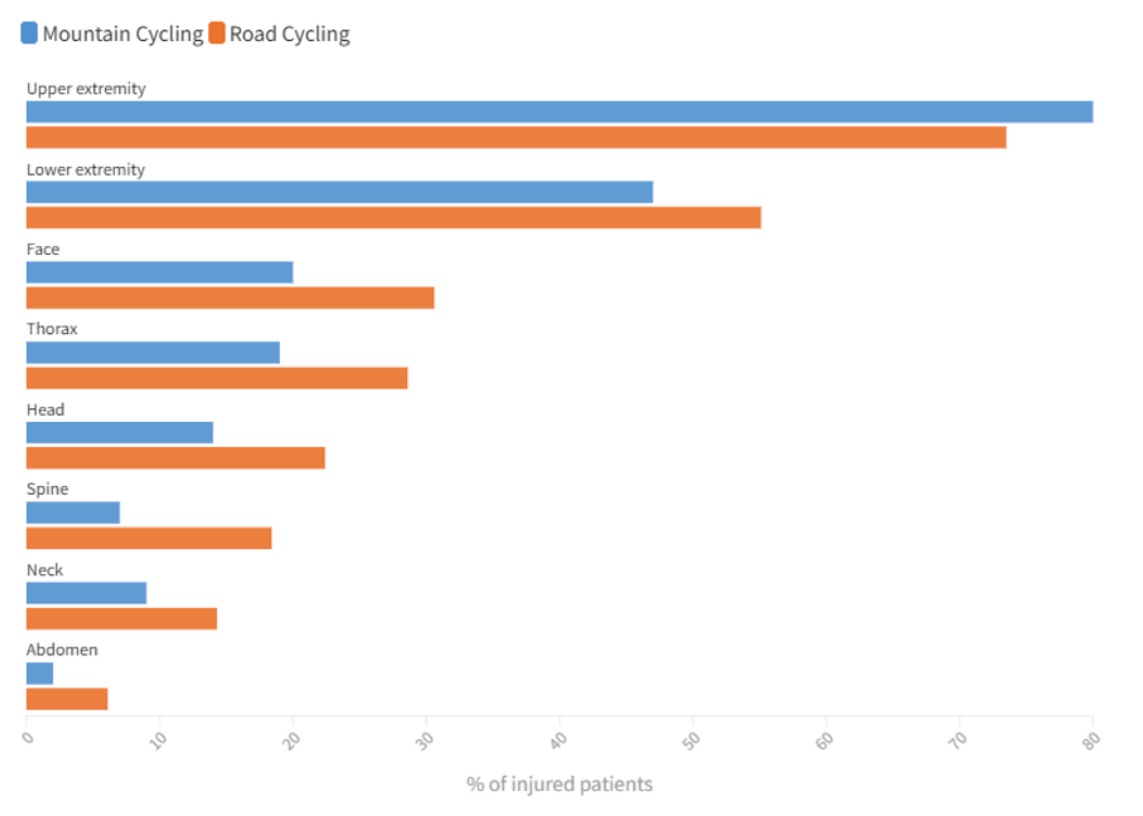
The findings
Before we dive into the main findings from this paper, here’s a snapshot of the injured cohort:
- the average age of rider in the study was 44.9 years (the youngest was 18, the oldest was 77)
- more than twice as many people presented with injuries from MTB than from road riding (100 vs 49)
- 85% of riders were wearing helmets at the time of their crash
- 92.6% of riders declared they’d had no alcohol in the lead-up
- 77.2% of crashes happened at less than 30 km/h
- most crashes happened in the morning (71%, vs 25% for afternoon and 4% at night)
- most crashes happened when it was sunny (70.5%, vs 26.2% when cloudy and 2.7% when rainy).
The way the riders sustained their injuries was interesting. As you might expect, motor vehicles posed much more of a problem for roadies than for MTBers, and MTBers were more likely to crash into another object (a tree, for example). But in both groups, a “loss of control” was responsible for more than half of all crashes.
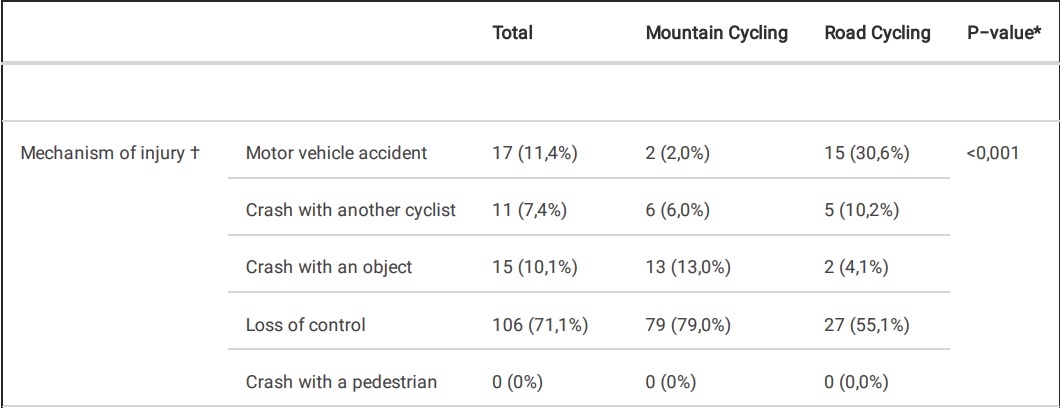
When it came to the actual injuries sustained, the researchers found that more road cyclists than MTBers required the most urgent medical care (i.e. triage levels 1 and 2) – 28.6% of roadies vs 21% of MTBers. More road cyclists than MTBers required surgery as well (26.5% vs 18%). Those facts were reflected in the overall Injury Severity Scores as well – the median ISS for MTB riders was 4 while for roadies it was 6. That score for roadies was similar to what was found in an Australian study a few years ago but lower than in other studies from elsewhere (e.g. this one from the Netherlands).
Digging a little deeper into the data provides some interesting insights. Like the fact that 14% of road cyclists had a head injury between AIS levels 3 and 6 (6 being the maximum), while only 1% of MTBers had the same degree of head trauma. It was a similar story with spinal injuries: only one MTBer had a spinal injury of AIS level 2 or higher, compared with five road cyclists. Most injuries though, as you might expect, occurred at the upper and lower extremities (the arms and legs, essentially).
As you might also expect, the researchers found a correlation between rider age and the severity of their injuries. Specifically, “for each additional year of age of the cyclist, the ISS increases by 0.09 units for mountain cyclists and 0.2 units for road cyclists. These results show that age is a risk factor, especially for road cyclists.” This finding is in line with previous research.

What it all means
To summarise all of the above, the main takeaway from this research is this: crash injuries are less common among road cyclists than MTBers, but when those injuries do occur, they’re more severe for road cyclists.
There’s an important caveat to note here, though. While twice as many MTBers came into hospital with crash injuries, that might be as much to do with where the study was carried out as the relative danger of the discipline. In the words of the researchers “The geographical location and the high percentage of populations practising this sport [MTB] could be the main determinants of this finding.” A map of the Sabadell area does indeed show a wealth of MTB trails near the hospital.
As for why road cycling injuries tend to be more serious, the researchers offer an explanation that makes obvious sense: “The high percentage of accidents involving motor vehicles in the road cycling group may be one of the main causes for the increased severity of injuries in this group.” As you can see from the table above, more than 30% of all road cycling injuries in this study were caused by a “motor vehicle accident," versus just 2% for the MTB cohort. I think we can all agree that crashes involving motor vehicles have the capacity to be more serious than those without.
The researchers also looked at whether other factors could explain the difference in injury severity between road and MTB riders. Differences in helmet use were considered, especially given road riders suffered more head injuries, but both cohorts wore helmets with around the same frequency (86% of MTBers, 83% of road riders).
Speed at the time of the crash was posited as a possible factor, too. The data doesn’t point to a significant difference between disciplines for the number of crashes occurring at more than 30 km/h (20% for MTB and 28.6% for road), leading researchers to suggest this isn’t a factor. Of course, a speed of over 30 km/h could be 35 km/h or it could be 80 km/h, and with higher speeds being more likely on the road, it still seems possible this could be a factor.
Which brings us to a few other concerns with this study.
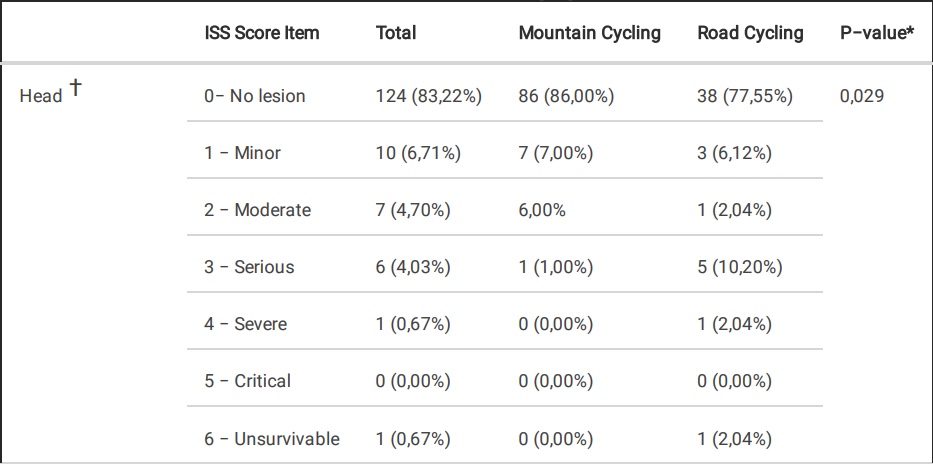
Limitations and questions
While the researchers managed to get nearly 150 riders to participate in their study, that’s not nearly enough to make a definitive statement about whether road or MTB is more dangerous. In low-population samples, small changes in absolute injury numbers have outsize effect on rates; many naturalistic observational studies have sample sizes in the thousands. As the authors explain: “This is only a percentage of all bike-related injuries." Along the same lines, this study was conducted during 2021 “when some mobility restrictions caused by the COVID-19 pandemic were still in place. Therefore, the sample size may have been influenced by periods of confinement.”
We’ve already touched on the issue of geography and how that seems to mean a higher percentage of MTBers than you might find elsewhere. In general though, any study that’s constrained to one location is always going to be limited in its scope. “This is a regional study and therefore our results may not be applied to other regions with different cycling infrastructure, traffic laws, and popularity of cycling,” the researchers write, before offering an alternative view. “However, given that this trauma center is one of the largest in Catalonia, we expect the results to be representative for other regions.”
It’s not clear what percentage of riders in the study were racing when they crashed, versus how many were riding recreationally or commuting. This is a factor that could presumably affect the likelihood (and severity) of any given crash. Another factor: some unknown number of riders who sustained minor crash injuries would never have sought medical help and thus would be impossible to include in the study.
The researchers also note that one rider among the 149 in their cohort died in hospital as a result of head trauma caused by a road crash. They note, though, that any cyclists who died at the scene of a crash wouldn’t have made it to hospital and so wouldn’t have been represented in their data – another small knock against the completeness of the dataset.
Concerns such as these highlight that this isn’t a perfect study, but then again, constraints and limitations are a near-unavoidable part of just about any research project. Ultimately, this is an interesting snapshot of the relative risks of road cycling and MTBing, even if the study is limited to one location, at one particular period in time.
At the very least, this paper is yet another reminder to us roadies of the dangers we face when sharing the road with drivers. Gravel riding, anyone?
Did we do a good job with this story?

